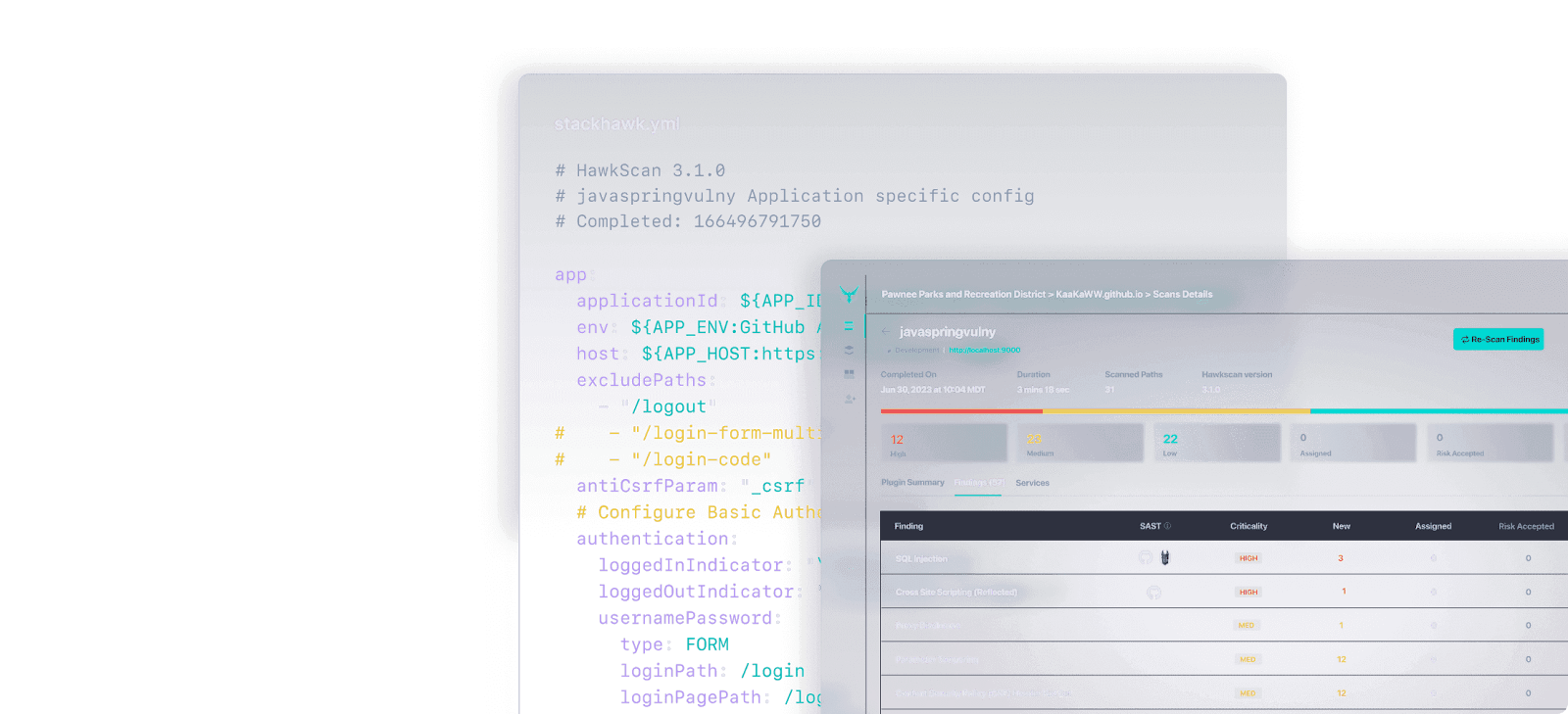APIs, especially REST APIs, are one of the most essential components of the software we build today. For data exchange and communication between applications, REST APIs are used in everything from high-traffic financial transactions to smartphone apps. However, REST APIs are more than just functionality; their implementation and integration are critical for securing sensitive data and systems from cyber threats. With REST APIs being used increasingly, API traffic and complexity are growing, and so is the need to secure them. To keep applications secure, developers need to implement advanced REST API security to tackle the sophisticated threats and vulnerabilities impacting apps on a daily basis.
This guide will focus on the different aspects of REST API security and give you the knowledge to protect your RESTful services from security threats. We will explore the detailed layers of REST API security, from the basics to advanced protection strategies. This comprehensive guide will provide the most effective and up-to-date best practices for securing your REST APIs. Let’s start with the basics: What is API security?
What is API Security?
A REST API security strategy is critical to protecting your RESTful APIs from the complex array of threats that exist in the wild. It encompasses various aspects, including protocols, systems, and tools to prevent malicious attacks on or through REST APIs. These components are essential in safeguarding the foundations of modern software communication that REST APIs facilitate.
At its core, REST API security ensures that only authorized users can execute authorized actions. This is primarily achieved through applying API authentication and authorization processes to each API call. These processes are crucial for verifying user identities and appropriately granting permissions. Encryption also plays a key role in API endpoint security as an essential mechanism to protect data as it travels between servers and clients. However, the scope of REST API security extends beyond just access control. It involves monitoring and logging REST API activity to identify potential threats, implementing rate limiting to prevent abuse, and managing the REST API lifecycle to reduce vulnerabilities that attackers could exploit.
REST API security is a continuous process within the software development lifecycle that requires constant attention. It must adapt to the changing threat landscape and the evolution of REST API designs and integration patterns. This means that development teams must take proactive measures, such as threat hunting and monitoring API usage. Adhering to industry standards and referencing recent security reports are crucial REST API security practices to establish a secure data exchange environment that maintains data integrity, availability, and confidentiality while minimizing the surfaces vulnerable to attacks.
Why is API Security Important?
By design, REST APIs are exposed to the open internet, making them vulnerable to attacks. REST API security is needed to protect the data being transferred between services, enhance user privacy, and prevent malicious actors from disrupting business operations through an attack.
In recent years, the consequences of security breaches in REST APIs have become more severe. These can lead to data theft, service outages, and financial losses. An unprotected REST API, for example, can allow an attacker to extract sensitive customer data and use it for identity theft and fraud. While data breaches are often associated with compromised databases, the same data can be exposed or leaked through REST APIs. Businesses face the direct impact of these breaches and regulatory penalties for not protecting user data under laws like GDPR and HIPAA.
REST API security is crucial to users' trust in digital services. A breach can damage a company’s reputation and cause a loss of customer trust and loyalty. Since REST APIs are interconnected, a vulnerability in one API can have a ripple effect, impacting other services and partners and amplifying the damage.
So, REST API security is not just a technical issue; it’s a critical part of business strategy. A well-implemented REST API security framework provides your users with a secure service and protects your business against the adverse effects of a successful API attack.
How Do You Secure a REST API?
Securing a REST API is a major task that must be undertaken at the beginning of API development. REST APIs are popular because they are simple and stateless and use standard HTTP methods. However, these characteristics can also make them vulnerable if they are not appropriately secured. Let’s examine some of the security features and patterns important for securing a RESTful API.
Transport Layer Security
Transport Layer Security (TLS) is a must for REST API security. It encrypts data between clients and servers to protect sensitive information like API keys and access tokens from being intercepted. This end-to-end encryption helps maintain data integrity and confidentiality by preventing man-in-the-middle attacks.
Tools like API gateways can simplify TLS implementation or enable mutual TLS (mTLS), which allows clients and servers to authenticate each other for extra security. By prioritizing TLS in your REST API, you reduce the risk of data breaches and user trust.
Authentication and Authorization
Authentication and authorization are essential for REST API security:
Authentication verifies the client identity, only legitimate users can access your API.
Authorization determines what actions an authenticated user can perform and restricts resource access to approved operations.
Common approaches include using an API Key, which provides a simple way to identify and track callers; OAuth 2.0, which issues short-lived, refreshable access tokens for secure access; and JSON Web Tokens (JWTs), which use signed tokens to assert a user’s identity and permissions. These access token mechanisms ensure that only authorized users can access your REST API, helping protect sensitive data and maintaining data integrity and confidentiality. Implementing scalable authentication and authorization is extremely simple with a modern API gateway.
User Input Validation
User input validation is essential to secure your REST API from common security threats. Injection attacks, such as SQL injection and cross-site scripting (XSS), occur when malicious or malformed data is sent to the API. The attacker can execute unauthorized code or access sensitive information. To mitigate these risks, you need to validate all incoming data and ensure it conforms to the expected data types and values. This involves checking the length, format, and content of user input and rejecting or sanitizing any data that does not meet the defined criteria.
A good input validation strategy can fortify your REST API by blocking malicious data before it reaches your internal logic or database. By enforcing strict input standards, such as acceptable characters or numeric ranges, you reduce the chance of unexpected behavior, data corruption, or unauthorized access. Overall, user input validation helps maintain the integrity and confidentiality of your system and protects your API from common vulnerabilities and attacks.
Security Audits and Penetration Testing
You need to test your REST API security regularly. Security audits assess your API infrastructure, policies, and codebase to ensure compliance with security standards. Penetration testing tests your API against real-world cyber-attacks. Integrating automated tools like StackHawk into your development cycle and hiring external penetration testers will give you a comprehensive view of your API security.
Encrypt Data in Transit and at Rest
Encryption is non-negotiable for REST API security when data is at rest, in addition to the security TLS offers for data in transit. For data in transit, use TLS with strong cipher suites. For data at rest, use encryption algorithms like AES and manage encryption keys with cloud providers or hardware security modules (HSMs) services.
Proper Error Handling and Logging
Proper error handling must be implemented to avoid leaking sensitive data through API errors. Uniform error responses that don’t reveal the internal workings of the API are important. Logging API transactions is vital for tracking and analyzing activities and ensuring that logs don't contain sensitive information.
Throttling and Rate Limiting
Throttling and rate limiting are essential to control the number of requests to your API, which will prevent denial-of-service attacks. Throttling controls the API’s throughput, while rate limiting imposes hard limits on API requests. Implement these through API gateways or middleware to avoid overuse and to protect against denial-of-service attacks.
Proper API Versioning and Deprecation Strategy
As you improve your API, you should have a transparent versioning and deprecation strategy. Use Semantic Versioning and communicate changes through changelogs. When deprecating older versions, give users ample notice and guidance so they can migrate to newer versions.
Zero-Trust Network Model
Adopting a zero-trust model means not trusting any user or system, even within your network perimeter. This means strict authentication and authorization verification, as well as applying the principle of least privilege and network segmentation to limit lateral movement.
Automate Scanning and Testing for Vulnerabilities
Scan and test your REST API for vulnerabilities regularly. To catch issues early, this should be an automated part of your development process, ideally in your CI/CD pipeline. Use dynamic and static application security testing tools to analyze your code and stay updated with new security threats and patches.
Secure the Underlying Infrastructure
The infrastructure hosting your API endpoints is the foundation. Regular updates, patches, strict firewall rules, and intrusion detection systems are necessary. In a cloud environment, use the security features provided by the provider and follow best practices in access and account management, especially ensuring that users are using secure passwords that are changed frequently and enforcing multi-factor authentication.
These best practices will provide a solid security framework for your REST APIs. However, always consider the specifics of your API deployment, such as regulatory requirements and the type of APIs you are managing, as there may be additional best practices to be aware of!
Augmenting API Security With StackHawk
As mentioned in our breakdown of best practices, StackHawk is pivotal in reinforcing some of the API security concepts outlined above. It is a dynamic application security testing (DAST) tool built for developers, offering a suite of automated testing capabilities that align closely with best practices for API security.

The platform is easy to use and automated, and it provides a best-in-class experience for developers to create secure APIs. Let's examine some of the benefits StackHawk offers API developers and their teams.
Automated Security Risk Tests
StackHawk provides an automated suite to test against common and more advanced API security risks. The platform helps to identify and resolve issues like SQL Injection and Remote OS Command Injection before deployment. This capability supports the abovementioned best practices involving regular security audits and penetration testing.
Integration with CI/CD Pipelines
The platform also integrates easily with CI/CD pipelines and can be set up to ensure every pull request is checked for new vulnerabilities. This ties in nicely with the best practice of testing in development to prevent shipping vulnerabilities to production.
Modern Tooling for Various API Types
Unlike other tools, StackHawk can support a wide variety of API types for testing. The tool caters to modern application architectures by supporting REST, GraphQL, SOAP, and gRPC APIs. This helps ensure that your entire API portfolio has blanket coverage instead of excluding API types that other tools may not support.
Efficient Vulnerability Management
The most powerful outcome for developers who use StackHawk is fast detection and detailed remediation documentation. StackHawk streamlines the process of fixing vulnerabilities, making developers' lives easier and the APIs they create more secure. By making the tool developer-friendly, API vulnerability management becomes easy to implement and utilize.
By incorporating StackHawk into your API development lifecycle, you can make significant progress toward maintaining a high-security standard and adhering to the best practices outlined in this guide.
Conclusion
As we wrap up our focused exploration of REST API security, the critical and complex nature of these practices is evident. This guide has guided you through the essential aspects of securing REST APIs, starting with foundational principles, including those highlighted in the OWASP API Top 10, and advancing to the strategies needed for robust REST API security. We've also discussed strategic best practices vital for strengthening your digital defenses, emphasizing their relevance in the context of REST API security.
In the ongoing journey to achieve security excellence, tools like StackHawk prove invaluable. StackHawk equips teams with the means to enhance their REST API security strategies effectively. Offering automated security testing specifically designed for modern REST APIs, seamless integration with CI/CD pipelines for early detection of vulnerabilities, and compatibility with a wide range of RESTful architectures, StackHawk ensures that your security measures keep pace with your evolving APIs.
As you aim to apply the insights from this guide to real-world security improvements, StackHawk is a great place to start helping you discover and test your APIs for potential vulnerabilities. Create a free account with StackHawk, the first step towards achieving optimal security for your REST APIs.



